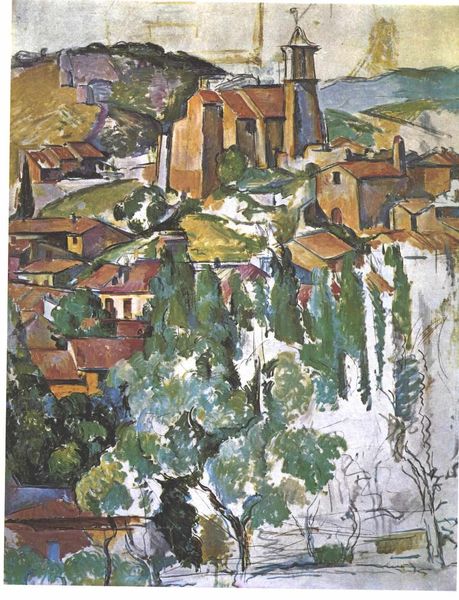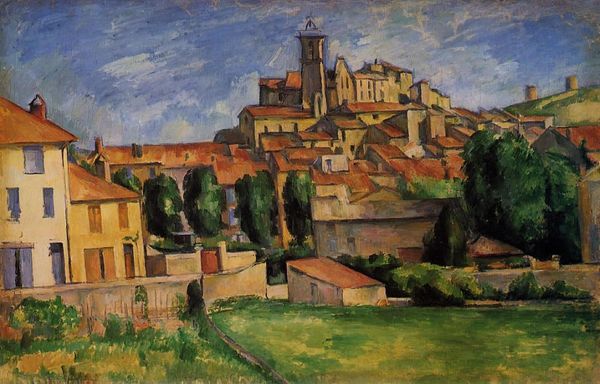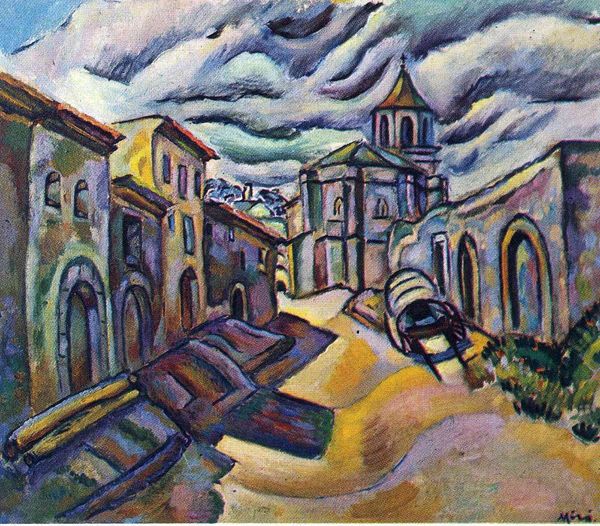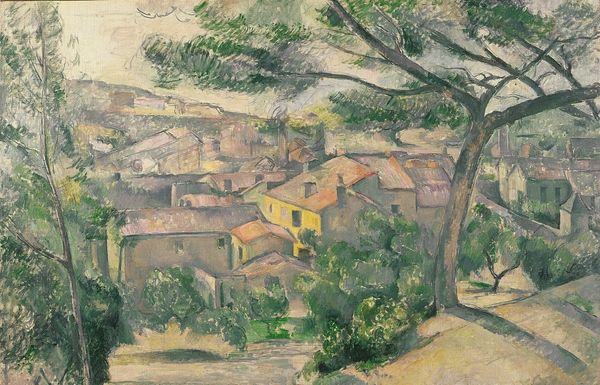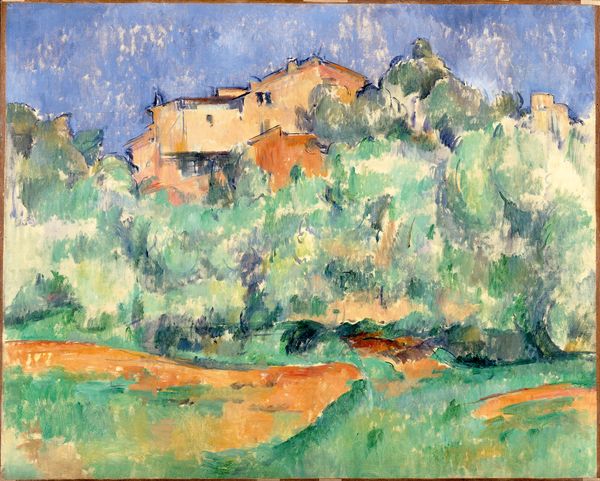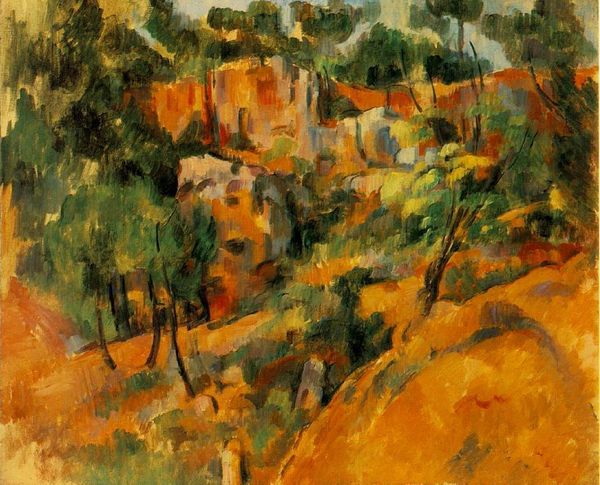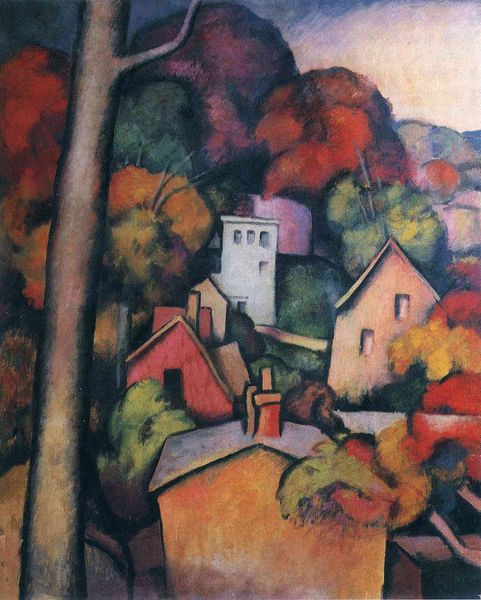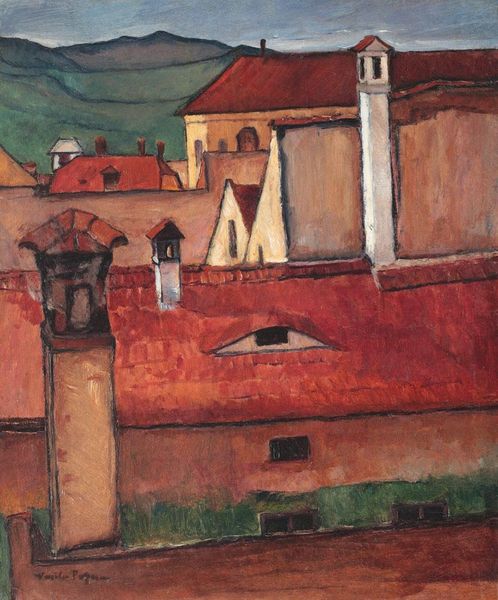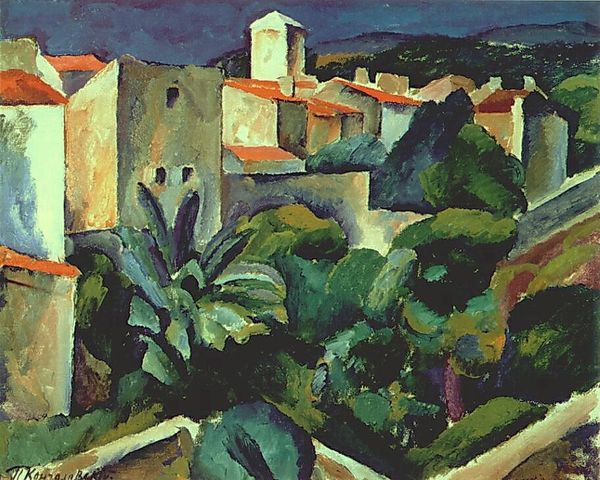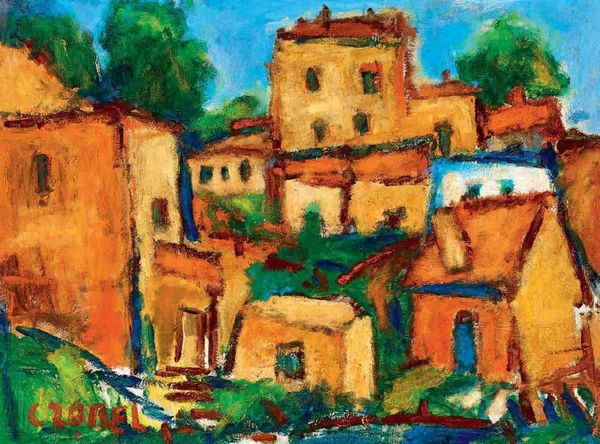
Copyright: Public domain
Paul Cézanne created "The Farm of Bellevue," using oil on canvas, possibly in the 1880s. It's easy to look at this image of rural France and see it simply as a quaint landscape. But its real value lies in what it tells us about the artistic culture of its time. Cézanne worked in a period when the established art institutions of France, like the Académie des Beaux-Arts and the annual Salon exhibition, held enormous sway over what was considered "good" art. Yet, a growing number of artists were looking to break free from these constraints. Cézanne was one of them. His painting style, with its visible brushstrokes and emphasis on color and form over realistic representation, was a deliberate challenge to the academic tradition. It was part of a broader movement towards artistic independence and experimentation. To truly appreciate Cézanne, we need to understand the institutional landscape he was working in and against, and how he and others paved the way for future generations of artists.
Comments
No comments
Be the first to comment and join the conversation on the ultimate creative platform.

